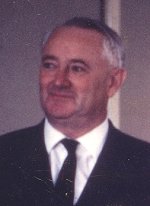Charles Steel
Long before reaching Dover, Harwich, Southampton or whatever their point of departure, countless outward-bound motorists study their itinerary, work out mileage, places to stop for meals or overnight halts. For nearly half a century many of the AA routes they have consulted and the information in them have been wholly or partly supplied by Charles Steel, who retired at the end of August, 1971.
He was the only survivor of the original Foreign Routes Department which was set up in 1925. At that time there were no individual AA routes sheets for Continental journeys. Europe's roads were largely pave (cobbles) or gravel, the latter particularly on mountain passes. Signposting too, was far from adequate.
So the AA member who ventured abroad with his car wisely placed much reliance on the AA's advice, especially where steep hills, unguarded precipices and hairpin bends were concerned. In those days travel by car was the exception rather than the rule, though it was a fairly easy matter to visit any country up to the frontiers of Russia. Trips further afield, to India for example, were much more problematical. Driving to Cape Town was out of the question.
Today, all that has changed. A myriad of route sheets have come and gone, superseded by complex planning packs. Autobahnen and autoroutes proliferate. Tunnels have been bored through mountains. The bars to travel now are political and hazards stem mainly from the volume of traffic encountered in all parts of the Continent.
Certainly the changes have been most marked since Charles Steel and his wife toured abroad on a tandem in order to gain some first hand experience of the routes he spent his days putting together for AA members. By 1939 the department could and did produce almost any itinerary the motorists were likely to ask for, but during the war it not surprisingly went into cold storage. A master-copy of each route section was carefully preserved at Reading Office, and these formed the nucleus of the post-war developments for which Charles was so largely responsible.
Incidentally he claims to have been the first member of the Head Office staff to resume work in Leicester Square when the war ended in 1945. The way in which this particular branch of AA service was developed provides an excellent example of the special relationship which always existed between the AA members and 'their' Association. Many went to the greatest trouble to obtain local road information and furnish detailed reports of their travel experiences in the hope that the details would be of value to others applying for touring assistance.
Charles Steel himself is like so many specialists, the possessor of an unassuming nature and an ability to submerge himself in the intricacies of his work - a task which called in particular for a good retentive memory, and an eye for detail. These qualities will to some extent account for his prowess at the bridge table, for of recent years he has become a keen club and competition player.
In earlier times he was an enthusiastic soccer player and afterwards a referee. Today he actively supports Spurs, being Tottenham born.
From Fanum Fare, Vol 9 No. 3 1971
Charles died peacefully at Northwick Park Hospital Harrow on Monday 10 January 2000.
